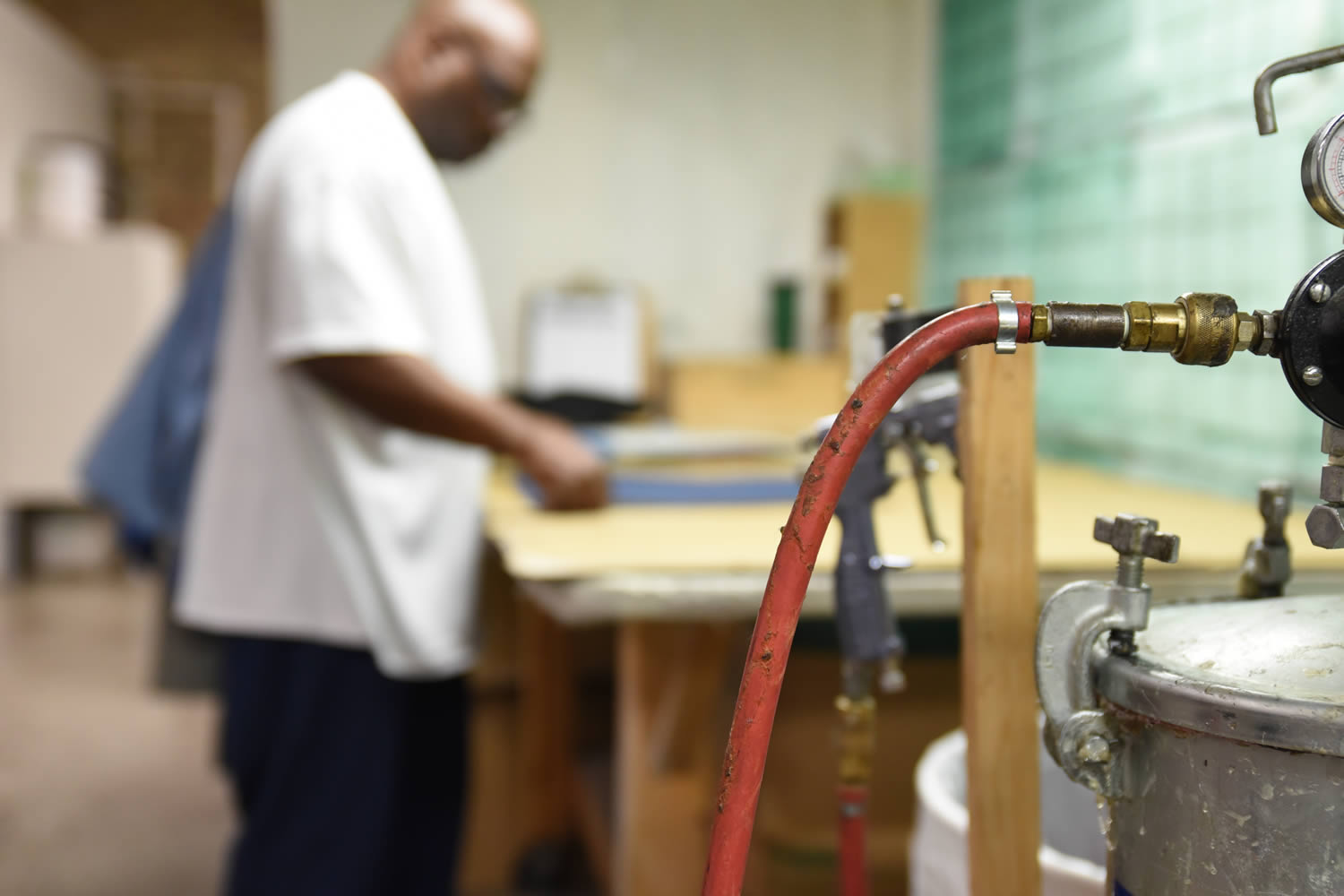
MINNCOR worker working with Fabric (DOC library)
MINNCOR worker working with Fabric (DOC library)

Share
In May 2018 after an exhaustive one and a half years of investigative research on prison labor, I published a two-part series on working conditions and the experiences of the incarcerated in Minnesota prison industries. (Part 1 and Part 2)
Balloon packaging, fleece pants, office furniture, docks, and laundry services are among the commodities and services provided and manufactured in Minnesota Prisons through MINNCOR, a profit-generating entity within the Department of Corrections (DOC). MINNCOR has its own infrastructure and staff, including a CEO. Through MINNCOR, the DOC has a monopoly over the bodies of incarcerated people.
I also published a follow up article in January 2020 that discussed layoffs due to a decline of activity related to the biggest user of Minnesota Prison Industries, Anagram. Anagram is a global balloon manufacturer that represents by far the biggest labor contract in Minnesota prison industries.
Some of the biggest takeaways from my prior reporting is:
- Many services including healthcare are privatized leading to lack of oversight and lower quality.
- Prison laborers are legally not considered workers so they don’t have access to basic workplace protections
- Most men make .25 cents an hour with dudecutions of over 77%. The vast majority of inmates make the lowest wage
- The highest paying positions are tied to products sold out of state, interstate commerce. In 2018 the standard wage was $7.60. However up to 80% of their wages can be deducted.
- While the published numbers are a bit misleading, “Minorities” are the majority in the Prison system.
Those that are assigned to work for companies who engage in interstate commerce, such as Anagram are obliged by federal law to be paid prevailing wages. The standard wage rate is $7.60 per hour. However, up to 80 percent of their wages can be deducted through levies, dramatically reducing net pay.
According to data from the DOC total wages were $4.5 million in the last fiscal year (ending in July). $3.48 million, or 77% of their wages are deducted. The largest deduction is “Cost of Confinement” 2.43 million, roughly 2/3rds of all deductions.
According to data provided via a Data Practices act request a lot of the top paying positions have been in decline while overall revenue for MINNCOR has stabilized from a high of $50 million in revenue in 2018. According to the most recent data in the last two fiscal years sales have remained at around $40 million with a decline in contracts with private companies.
For those not working in InterState commerce jobs or decline in available position the loss of income is substantial
The Federal Prison Industry Enhancement Certificate Program oversees rules of interstate commerce and is set up “to permit the use of the room and board deduction to lower costs otherwise incurred by the public for inmate incarceration.” According to data from the National Correctional Industries Association, for the quarter ending June 30th, 2021, those working an interstate commerce job in Minnesota have 76% of their wages deducted. Of the $1,082,518 of wages generated, more than half $591,339 are “Room & Board” deductions.
For those that are being laid off the drop in wage will be substantial. Most jobs in the Department of Corrections are non-interstate commerce and therefore not subject to the substantially higher, prevailing wage. MINNCOR laborers and DOC work crews earn on average less than $1 an hour. Pay ranges from 25 cents to $2 an hour. According to DOC Directive 204.010, the highest-paying positions are assigned only under strict circumstances, out of reach for the vast majority of inmates.


Thanks for the article on MINNCORR I worked the ware house at the Mpls. Vet Home until 2006 One big item ordered from MINNCORR was office furniture I never thought the quality of what came from MINNCORR was even close to the quality of items bought from Steelcase or Herman Miller
MINNCORR got an advantage when the Vets Home and other state agencies ordered from them
I never thought there was any rehabilitation value for those working for Oak Park Industries and workers working for out side vendors to me were getting the shaft.
Another item from MINNCORR were manila folders which actually competed with a local industry Smead which was based in Hastings.
Until I saw your article I never realized just how rotten the prison labor system is